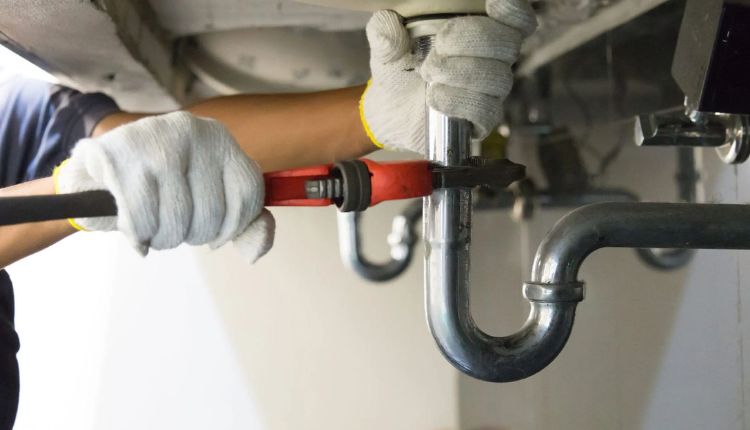Emergency Response: What to Do When Pipe Damage Occurs
Pipe damage can have serious consequences, ranging from minor leaks to catastrophic failures. In industrial settings, residential areas, or construction sites, damaged pipes can disrupt operations, cause property damage, and pose significant safety hazards.
An effective emergency response plan is crucial to mitigate the impact of pipe damage, minimize downtime, and ensure the safety of everyone involved. This article will explore the key steps to take when pipe damage occurs, helping you act swiftly and efficiently in an emergency.
Understanding the Risks of Pipe Damage
Before diving into the emergency response procedures, it’s essential to understand the risks associated with pipe damage. The severity of these risks depends on various factors, including the type of fluid being transported, the damage’s location, and the pipe’s size.
1. Water Pipes:
Damage to water pipes can result in flooding, extensive property damage, and contamination of clean water supplies. In residential areas, a burst water pipe can cause severe harm to homes and infrastructure, leading to costly repairs and potential health risks.
2. Gas Pipes:
Gas pipe damage is hazardous due to the risk of explosions or fires. Leaks in gas pipes can release toxic fumes that pose severe health risks, potentially leading to serious injury or even death for both humans and animals.
3. Oil and Chemical Pipes:
Damage to pipes transporting oil, chemicals, or other hazardous materials can lead to significant environmental contamination. These incidents often necessitate specialized cleanup efforts and can result in long-lasting ecological damage.
Immediate Steps to Take When Pipe Damage Occurs
When pipe damage is detected, taking immediate action is crucial to prevent further damage and ensure safety. The following steps should be included in your emergency response plan:
1. Assess the Situation
Quickly assess the extent of the damage and identify the type of pipe involved. Determine if the damage poses an immediate threat, such as a gas leak or flooding. If the damage involves hazardous materials, evacuate immediately and alert the relevant authorities.
2. Shut Off the Source
Locate and shut off the source of the fluid being transported through the damaged pipe. This may involve turning off a water valve, closing a gas line, or stopping a pump. In some cases, it may be necessary to shut off the main supply to prevent the fluid from continuing to flow into the damaged area.
3. Evacuate the Area if Necessary
If the damaged pipe poses a significant threat, such as a gas leak or chemical spill, evacuate immediately. Ensure that everyone knows the danger and moves to a safe location. Follow any established evacuation procedures and coordinate with emergency services if needed.
4. Contain the Damage
Take measures to contain the damage and prevent it from spreading further. This may involve using absorbent materials to soak up spilled liquids, placing barriers to contain flooding, or using emergency repair clamps to stop leaks. For hazardous materials, it is essential to follow proper containment procedures to avoid exposure and environmental contamination.
5. Alert Emergency Services
Depending on the severity of the damage, contact emergency services, such as the fire department, police, or hazardous materials response teams. Provide them with detailed information about the situation, including the type of pipe, the material being transported, and the extent of the damage.
Preventing Future Pipe Damage
While responding effectively to pipe damage is critical, taking steps to prevent future incidents is equally essential. Here are some preventive actions to keep in mind:
1. Regular Inspections and Maintenance
Conduct regular inspections of your pipe systems to identify potential weaknesses, such as corrosion, wear and tear, or pressure issues. Implement a maintenance schedule to address any problems before they lead to significant damage.
2. Install Protective Measures
Consider installing protective measures, such as pipe chocks, supports, or coatings, to reduce the risk of damage from environmental factors or mechanical stress. Additional protections may be necessary for pipes in high-risk areas, such as those exposed to extreme temperatures or heavy machinery.
3. Train Personnel on Emergency Procedures
Ensure that all personnel handling and maintaining pipes are trained on emergency response procedures. This includes knowing how to shut off systems, contain damage, and evacuate safely. Regularly review and update your emergency response plan to address any new risks or changes in operations.
4. Invest in High-Quality Materials
Invest in high-quality materials designed to withstand your environment’s specific demands when installing new pipes or replacing damaged ones. Consider using corrosion-resistant materials, reinforced pipes, or flexible joints to reduce the likelihood of future damage.
Be Prepared and Act Swiftly
Pipe damage can be a serious and costly issue, but with the right emergency response plan in place, you can minimize its impact and ensure the safety of your operations. If you want to learn more about safeguarding your pipe systems, reach out to industry experts who can guide you through tailored solutions.
